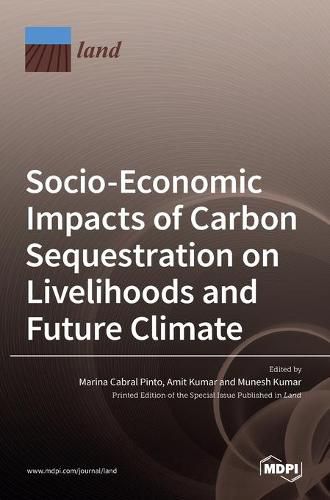Readings Newsletter
Become a Readings Member to make your shopping experience even easier.
Sign in or sign up for free!
You’re not far away from qualifying for FREE standard shipping within Australia
You’ve qualified for FREE standard shipping within Australia
The cart is loading…






This title is printed to order. This book may have been self-published. If so, we cannot guarantee the quality of the content. In the main most books will have gone through the editing process however some may not. We therefore suggest that you be aware of this before ordering this book. If in doubt check either the author or publisher’s details as we are unable to accept any returns unless they are faulty. Please contact us if you have any questions.
In the modern era of industrial revolution, urbanization, and deforestation of forest land, carbon © sequestration through well-known activities called land use, land-use change and forestry (LULUCF) could establish a win-win situation from a climate change and sustainable development perspective. Equally important are the socio-economic co-benefits of C sequestration, given their implications on properly designed policies, especially on restoration and/or conservation of forests located in the tropical eco-regions. Further, the huge contribution of C sequestered in the vegetation and its underlain soil helps to protect socio-economic damages from climate change. This book explores the C sequestration of vegetation and its underlying soil, deforestation, as well as its impact on climate change, a vulnerability risk assessment for the climate, socio-economic impacts, and the mitigation of future climate impact strategies. The theme of the book extends across environmental policy (e.g., the Paris Agreement and REDD+), C sequestration in the terrestrial ecosystems, the applicability of land use, and the C credit generated at regional and global scales. This book is highly useful for environmentalists, hydrologists, soil scientists, and policymakers to understand the C sequestration potential of the vegetation and underlying soil in the terrestrial ecosystems at the regional, national and global scale to further study the long-term impacts on socio-economic development resulting from its implementation via climate change modeling.
$9.00 standard shipping within Australia
FREE standard shipping within Australia for orders over $100.00
Express & International shipping calculated at checkout
This title is printed to order. This book may have been self-published. If so, we cannot guarantee the quality of the content. In the main most books will have gone through the editing process however some may not. We therefore suggest that you be aware of this before ordering this book. If in doubt check either the author or publisher’s details as we are unable to accept any returns unless they are faulty. Please contact us if you have any questions.
In the modern era of industrial revolution, urbanization, and deforestation of forest land, carbon © sequestration through well-known activities called land use, land-use change and forestry (LULUCF) could establish a win-win situation from a climate change and sustainable development perspective. Equally important are the socio-economic co-benefits of C sequestration, given their implications on properly designed policies, especially on restoration and/or conservation of forests located in the tropical eco-regions. Further, the huge contribution of C sequestered in the vegetation and its underlain soil helps to protect socio-economic damages from climate change. This book explores the C sequestration of vegetation and its underlying soil, deforestation, as well as its impact on climate change, a vulnerability risk assessment for the climate, socio-economic impacts, and the mitigation of future climate impact strategies. The theme of the book extends across environmental policy (e.g., the Paris Agreement and REDD+), C sequestration in the terrestrial ecosystems, the applicability of land use, and the C credit generated at regional and global scales. This book is highly useful for environmentalists, hydrologists, soil scientists, and policymakers to understand the C sequestration potential of the vegetation and underlying soil in the terrestrial ecosystems at the regional, national and global scale to further study the long-term impacts on socio-economic development resulting from its implementation via climate change modeling.